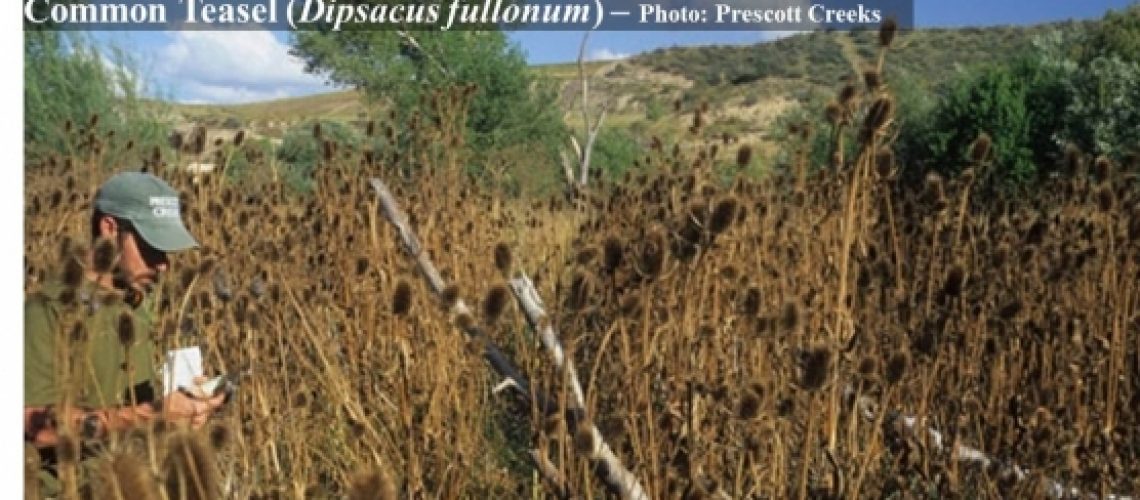In April, Prescott Creeks will once again make a push to control invasive weeds in the Granite Creek Watershed. Our American Conservation Expereince (ACE) crew will be here for 8 days to help us make another push at improving habitat.
Not sure what an invasive weed is?
Often thought of as just “weeds” these are the pesky plants we “love to hate”. Maybe they stick in your socks, out-compete the plants you actually want to grow in your garden, or degrade habitat for wildlife. A weed can best be defined as follows:
Any plant that interferes with a management object in a given place at a given time.
Generally, invasive weeds are plants that (1) are not native to the US and (2) are a harm to human health, or cause economic or environmental harm. Invasive weeds can either be accidentally introduced (ex: animal feed) or intentionally introduced (ex: ornamental plants). Once released, however, they spread out of control because ecosystems in the US lack adaptations to keep them in check.
Not sure why invasive weeds are a problem?
Invasive weeds are spreading at an alarming rate, especially in the Western US. It is estimated that invasive weeds colonize about 4,600 acres of our public lands every day. This weed invasion destroys native habitat and harms plant and animal biodiversity. Here in Prescott, Spotted Knapweed and several other invasive weeds have gained a foothold in our parks, creeks, and backyards. Our widespread Spotted Knapweed is troubling because researchers have found increased erosion and stream sediment loads in watersheds where it is established. Nutrients and pollution bind to sediments and contribute to water quality problems in our watershed. If we can reverse the momentum of the invasive weeds in Prescott, we could also improve water quality in Granite Creek and Watson Lake.
However, we must act quickly. Every year, invasive weeds spread, sending out roots, dispersing millions of seeds that can persist for years, and become more and more difficult to eradicate.
How can you help?
- Volunteer! We will be organizing three weed pulling and native seeding days during the summer – in May, June, and July.
- Learn to identify invasive weeds, and report them! Contact Prescott Creeks or use an EDD Map (Early Detection and Distribution System for Invasive Species). An EDD Map Invasive Species reporting App is also available for smart phones.
- Fight Back! Control invasive weeds on your property before they spread to your neighbors.
What weeds are on the Prescott Creeks List? View a photo gallery of our Priority Invasive Weeds!
The National Fish and Wildlife Foundation is funding a major portion of this two year project through their “Five Star and Urban Waters Restoration Program.” Key partners for the project will include the Yavapai Weed Management Area, City of Prescott, the American Conservation Experience, and River Network. Last year, we also received funding from the Arizona State Forestry Division to bolster the effort.
If you want to get involved let us know!
Attachment:

